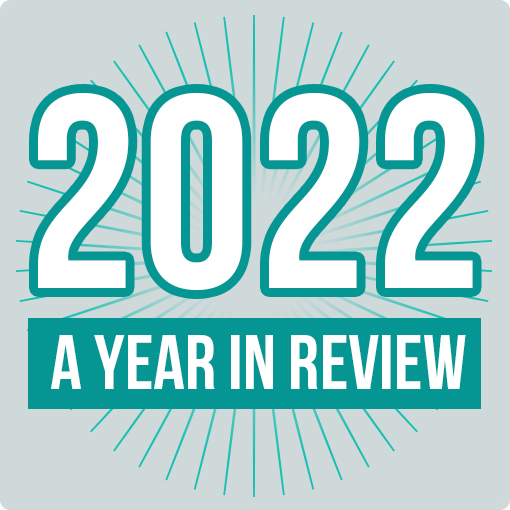 What started out as the simple task of sending an email message has now morphed into a complex set of actions that seem to grow in difficulty each month. Spam filters, complex legislation and falling email deliverability are all there to trip up your next campaign. It makes the simple ‘print, fold and mail’ option of direct mail seem a lot more appealing. And then there is telemarketing – hey, all you need there is a dial tone and you are away. Nope, when compared with other marketing channels, email marketing is now most definitely in the too-hard basket. Reason enough to go back to basics and evaluate if all this work is focused on the right areas.
What started out as the simple task of sending an email message has now morphed into a complex set of actions that seem to grow in difficulty each month. Spam filters, complex legislation and falling email deliverability are all there to trip up your next campaign. It makes the simple ‘print, fold and mail’ option of direct mail seem a lot more appealing. And then there is telemarketing – hey, all you need there is a dial tone and you are away. Nope, when compared with other marketing channels, email marketing is now most definitely in the too-hard basket. Reason enough to go back to basics and evaluate if all this work is focused on the right areas.
So what should be the real reasons to plan your next or even your first email marketing campaign?
For a few it’s the increased tracking the channel now provides. You can now see who opened the message, clicked the links it contained and even chose to end it all by unsubscribing. Yes, these are important measures – but they are just that, important not critical. They represent the attention your marketing is receiving not the true outcomes we want it to achieve.
Others see a reduced campaign cost as reason enough to embark on their first email marketing campaign. When your cost per message shrinks to cents compared with direct mail dollars it’s hard not to be seduced by the channel. Just think of all that money you could save and use on other campaigns. But once again, cost per message is not the metric to focus on – it is cost per conversion that defines the success of the medium.
For instance, I would happily pay $1.00 for a direct mail communication piece that has a 50% chance of convincing my 500 prospects to purchase my $100 product when compared with the alternative email message that costs a mere 6 cents but converts at a measly 2% rate. In this case, I would I spend $500 for the more expensive option but it would provide me $25,000 in sales, compared with investing the pittance of $30 and achieve a similar pittance return of $1000 extra revenue.
All this brings us neatly to our first key email marketing behaviour – sales conversion. It’s a different metric than the one I propose for customer email messaging, but more on that later.
Producing a freshly minted new customer from a prospect email is a big ask from a small 6 cent message. The mere smidgen of attention it receives means it has some tough work ahead to sell anything. And that’s why it’s an impossible task in most industries to expect your prospect email marketing to transform prospect subscribers into customers. But that doesn’t mean it’s a failed option for this type of marketing – you just need to give it tasks that it has a good chance of achieving.
It helps when picking the right task to imagine the process of moving a prospect to becoming a customer as a series of steps up a conversion ladder. The top rung represents the celebration of a new customer, and the bottom rung is the very first chance to communicate your message.
Here’s an example conversion ladder for a business consultancy practice. The first rung could start with a prospect visiting the website and registering to receive a free report. This action could be followed up by a series of emails that ‘sell’ the option of taking the next rung on the ladder – a complimentary 15 minute telephone business check-up. In the closing minutes of this call, the prospect can be told about the $2500 business benchmarking study that comes with a complete 100% satisfaction guarantee. This message can be reinforced through direct mail, faxes and phone calls. Those that take up the benchmarking study are then ready to be introduced to the final rung of the ladder – the full service consulting options.
Expecting a single email message to communicate the value of the full consultancy coaching is just too much. It’s a far simpler job for it to convince those who have read a report to further invest 15 minutes of their time on the phone with an expert.
 Nine times out of ten a multitude of communication channels are required to make a conversion ladder like this work. Email, direct mail, fax, telephone and face-to-face meetings can all be employed to move the prospect upwards. Email does a great job in the early stages when you are looking for a low level of commitment to get things moving. Providing an email address requires less consideration than providing a physical address and phone number.
Nine times out of ten a multitude of communication channels are required to make a conversion ladder like this work. Email, direct mail, fax, telephone and face-to-face meetings can all be employed to move the prospect upwards. Email does a great job in the early stages when you are looking for a low level of commitment to get things moving. Providing an email address requires less consideration than providing a physical address and phone number.
So, while prospect email marketing moves prospects up the early stages of a conversion ladder, what about customer-focused email marketing?
But before I work through the answer, first ponder this. Imagine you sell a consumable product that is normally re-purchased every 6 weeks. Also imagine that a customer purchased from you 2 years ago and hasn’t been back since. Would you still treat them as a customer? How about the customer who has been purchasing from you every 6 weeks solid for 6 months? How valuable would you rate the frequent purchaser against the long lost customer of 2 years back?
The key metric here is the inherent latency of purchase, that is the time taken between purchases. Ideally you want this to be as short as possible. By modeling your own customer purchase data you will be able to calculate your average latency value for your own customers.
From this data you should be able find those groups that are under- and over-performing against the average. You can then target your email marketing towards those with a high latency value – that is those having large gaps in their purchase activity.
Great customer-based email marketing shortens the times between subsequent purchases. Sometimes offers help and, obviously, the top-value offers should be sent to those with longer latency values. For instance, customers who haven’t purchased in 12 months could be offered a 25% discount while those who purchased only last week could get a 15% reduction.
So, to wrap up, while it’s important to track the number of emails that are opened, which links are clicked, and who chose to unsubscribe, these are just measurements of attention.
They do not truly reflect the real behaviours you want your email messages to influence.
Effective prospect-based email marketing moves people one step further up the sales conversion ladder. So long as each step is a manageable one then it will do well – but force it to take a lead from raw prospect to customer in one go and email will struggle to work.
Measuring the effectiveness of your customer-focused email marketing requires access to your sales data. By tagging the links contained in your customer email messages you can see any online purchases at an aggregate value. But it is purchase data at a customer level that reveals if your messages have affected individual customer purchase latency.
Any marketer who owns an email campaign that moves prospects closer to being buyers and convinces customers to purchase more frequently is a happy soul who would gladly struggle through the complexity to launch their next campaign.


